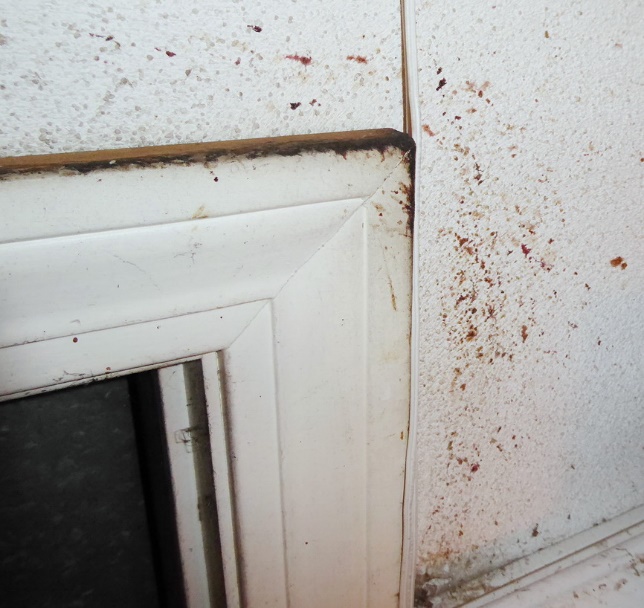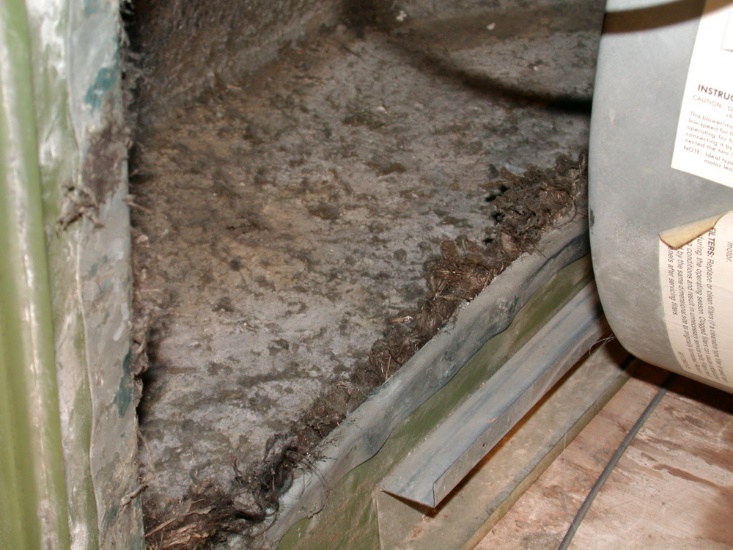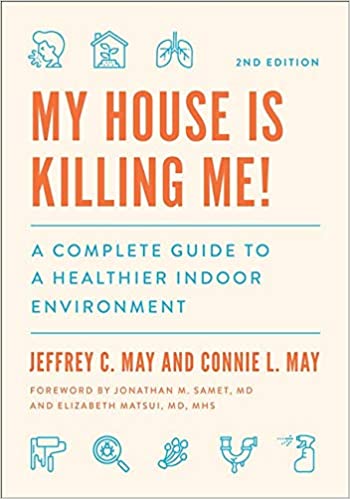Homeowner Newsletter: Winter 2020-2021
©2021 Jeffrey C. May
Even though we are facing this frightening pandemic, the real estate market in certain parts of the country is surprisingly active, and properties in less densely populated locations seem particularly appealing. I have heard that people are waiting in long lines to go to open houses and are then only allowed to look at a property for a specific period of time. Many people have told me that their real estate brokers are discouraging them from having home inspections, and that some properties go under agreement for thousands of dollars over the asking prices because of the competition among potential buyers.
Moving may be a mistake if you end up living in a house with indoor air quality (IAQ) problems. This is particularly true if you or anyone in your household has allergies, asthma, or other environmental sensitivities (though anyone can become sensitized over time to environmental triggers). If you are looking for a new home, there are some building characteristics that should raise red flags in your mind. In this article I’ll discuss some below-grade (below-ground) spaces and some heating and cooling systems.
Basements: Many species of mold can grow in elevated relative-humidity (RH) conditions, even in the absence of liquid water. Many older homes that I inspect have moldy unfinished basements because the relative humidity (RH) has not been adequately controlled (kept under 50%) since construction; some newly constructed houses also have this problem.
In finished basements, the RH should be kept under 60%. Sometimes air conditioning can help control the RH, but sometimes dehumidification has to be added. Occupants may air-condition or dehumidify a finished basement in summer but then not heat the space in winter unless they are using the space. As air cools, its RH rises, so a finished basement can be riddled with mold growth if it hasn’t been heated consistently (with the thermostat set at a minimum of 60oF) from late fall until early to mid-spring, depending on climate conditions. If you enter a finished or unfinished basement and detect a musty smell, or if you see a lot of plug-in fragrance emitters, you should be concerned.
Crawlspaces: Even if you never enter a crawlspace, air from a crawlspace will flow up into the rooms above. Dirt crawlspaces should be avoided as they are invariably moldy, especially if they have been vented to the exterior (all that humid air flowing into the space and condensing on cool surfaces).
Pests: Exposed fiberglass insulation in a basement or crawlspace that is shredded, torn down in spots, or that contains mouse burrows has or has had a pest infestation (mice love to nest in this material). Mice impart unpleasant odors, and mouse-urine trails can contain mold growth. The insulation will have to be removed under containment, and the exposed framing (joists, cross-bracing, subfloor) HEPA vacuumed and spray-paint sealed. Any surfaces that contain mouse-urine trails or mouse droppings should be disinfected as part of the cleaning process. This work should be done under asbestos-level containment and prior to your occupancy.

Heating and Cooling with Ducts: A home inspector or HVAC (heating, ventilation and air conditioning) technician can open up a furnace, heat pump, or air handler to inspect the interior for moisture stains or even spots of possible mold growth. Any exposed fibrous lining material that is dusty can contain mold growth, especially if the filtration has been inadequate. The furnace should be thoroughly cleaned (it may have to be dismantled to do this work properly). Any exposed fibrous lining material should be replaced with closed-cell foam. If the furnace is over 15 years old, consider replacing the unit. Be sure that the new unit can handle a 4 to 5 inch deep pleated media filter with a MERV rating of at least as 8 or even an 11 if anyone in the household has allergies or asthma. The ducts should be inspected and cleaned as needed.

Other kinds of heating and cooling: If a property has any mini-splits, the units should be professionally cleaned before you move in and thereafter kept dust free, as such units have inadequate filtration.
If the house has hot-water heat delivered by baseboard convectors, the fin tubing can be covered with allergenic dust. The covers should be removed and placed beneath the fins. Rags can be placed on the covers to protect the flooring. The tops, bottoms, and sides of the fins should be HEPA vacuumed and then the fins blasted with steam from a steam-vapor machine. The tops and bottoms of the covers should be cleaned before they are reattached. Once convectors have been cleaned in this way, you need only damp wipe the covers before turning on the heat in the fall. If the house has radiator heat, the radiators can be HEPA vacuumed and wiped clean, as can any radiator covers if present. Steam radiators can be disconnected, carried outdoors, and hosed off.
Don’t inherit window air conditioners, as people rarely clean them from year to year and often store them in damp spaces. Window air conditioners aren’t that costly, so just buy new ones.
A window air conditioner should be cleaned every year before being re-installed. Take the unit outdoors, remove the cover for cleaning, and encase the motor and other electrical components in aluminum foil. Using a small flow from a hose, wet the interior, clean surfaces with a small brush (be careful not to bend the fins), rinse the surfaces, and then allow them to dry before reinstalling the cover. Clean the filter as directed. If the filter slot does not have the space for installation of a better filter, you can cover the interior air intake with electrostatic filter material with a MERV-7 rating ( www.webproducts.com).
In the end
If possible, hire an experienced home inspector to inspect the property before you sign on the dotted line. Remember that a home inspector is a generalist and may not cover all the issues that worry you. List your questions and concerns, so that the inspector can refer you to specialists as needed. If market conditions pressure you to commit to a property without having a home inspection, hire a home inspector before you move into your new home; and have some funds set aside to handle work you may have to do for improved IAQ.
WISHING YOU A HEALTHY 2021. Jeff
My House is Killing Me! A Complete Guide to a Healthier Indoor Environment Jeffrey C. and Connie L. May

“This new edition is even better than the first. A must-read for patients with respiratory problems and the physicians who care for them.” (Richard Stephen Irwin, MD., University of Massachusetts Medical School)
“It is my privilege to recommend Jeff and Connie May’s new edition of My House is Killing Me. It is incredibly informative, comprehensive, and easily digestible. It has broad appeal and is an excellent guide for the general public as well as medical practitioners. A highly valuable resource!” (Alex Bingham, MD., Northeast Functional Medicine)
Published by Johns Hopkins University Press
